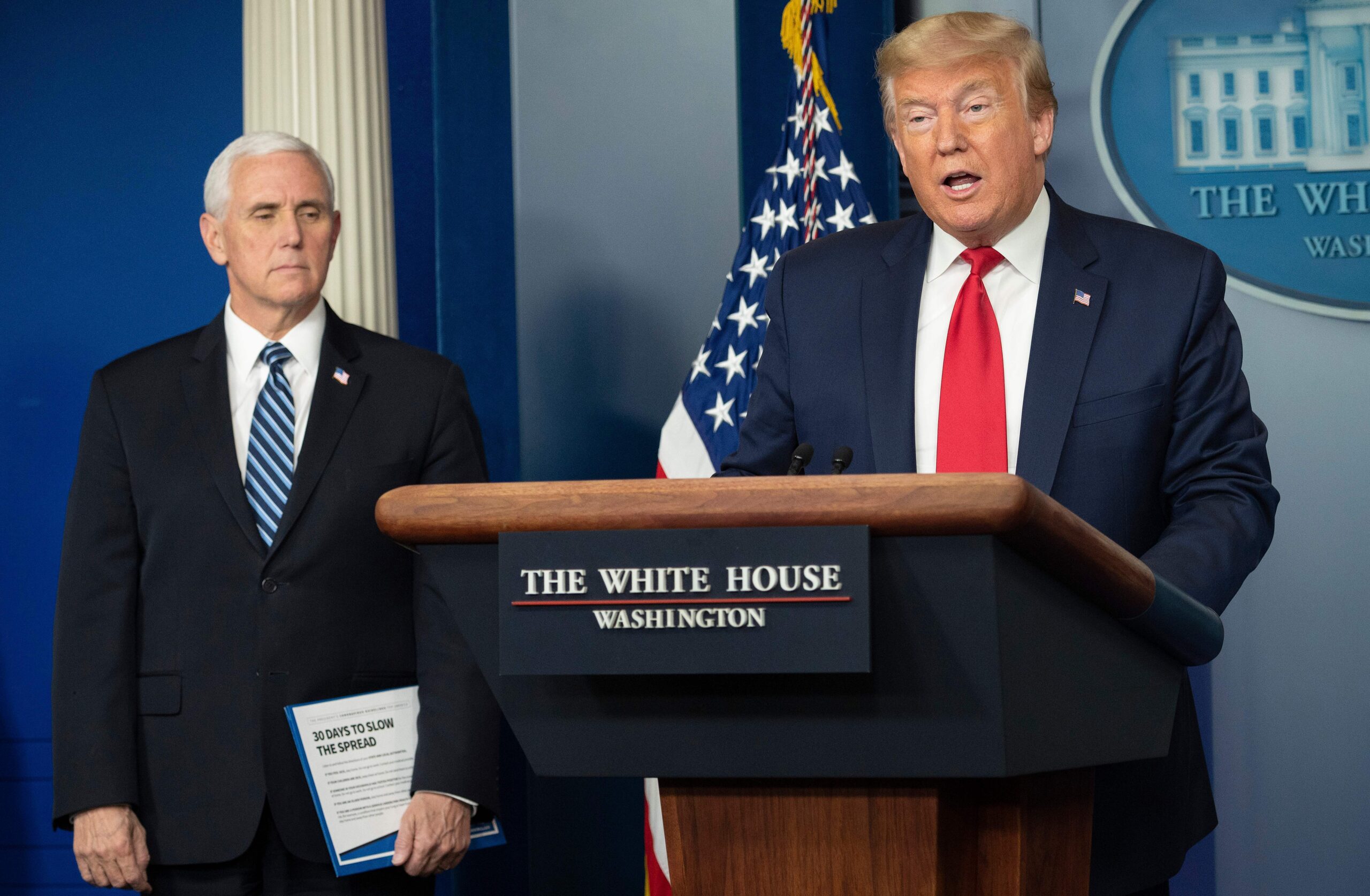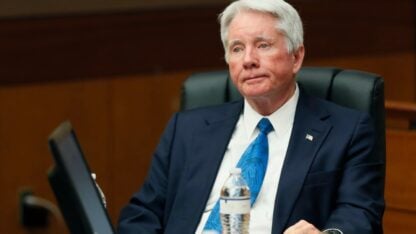WATCH: White House Task Force Briefing On Coronavirus Response

The White House is looking into when and how it can begin to reopen the country, largely at a standstill because of the coronavirus pandemic.
Jim Watson / AFP via Getty Images
Updated at 2:51 p.m. ET
The White House’s coronavirus response task force convened a briefing Friday afternoon as the conversation in Washington turns toward how America could reactivate after going dormant to slow the pandemic.
President Trump is expected to receive recommendations about when and how the nation could reopen for business. He and advisers must make difficult decisions about how to balance economic, social, public health and other priorities.
“We’re going to go back to work and we’re going to stay healthy,” Trump said on Friday. “We are looking at a date. We are hoping to fulfill a certain date. But we aren’t going to do anything unless we know we can be healthy.”
Dr. Anthony Fauci, a top immunologist who has been advising the White House’s disaster response, suggested at a briefing on Thursday that normalization might look different for different parts of the country.
All the same, if the end has come into view, the nation still must travel a difficult course to reach it, said another top physician, Dr. Deborah Birx, at Friday’s briefing.
She cited data about infections and deaths that are following expectations but are not yet on the down slope.
“As encouraging as they are, we have not reached the peak,” Birx warned.
Trump: Response supplies flowing
Trump asserted on Friday that the federal response has helped mitigate earlier shortages in masks, equipment and other materiel sought for hospitals and health care workers.
“We’re in great shape in every way,” he said. “Ventilators, protective clothing — we’re not getting any calls from governors at this moment. We’re getting very few calls from governors or anybody else needing anything — we’re in great shape for this surge that’s coming in some areas.”
It wasn’t immediately possible to assess whether, in fact, the shortfalls that have been reported in some places have been ameliorated; the president’s statement followed weeks’ worth of efforts to marshal, ship and produce the supplies.
Trump has, at various times, dueled with governors or other officials about the local needs or local responses to the crisis.
The president said he lamented that new predictions call for about 60,000 deaths from the pandemic but he said that outcome was preferable to the higher projections, which ranged from 100,000 deaths into the prospect that millions could be killed.
“In the mist of grief and pain, we’re seeing signs our aggressive strategy is saving countless lives,” Trump said.
Trump and public health authorities urged Americans to continue to stay home, keep away from large groups and take the other precautions urged to slow the spread of the virus. The countermeasures are working, officials say.
Questions about process for normalization
With confidence now strengthened about the validity of the social distancing strategy and early indications about the end coming into sight, discussion is now turning to how America may be able to get back to normal.
The White House’s advisers suggest that there won’t be one plan that applies everywhere.
“I don’t think there are going to be benchmarks that are going to be consistent from one [area] to the other,” Fauci said on Thursday.
Trump has been under pressure to at least announce an end date to the countermeasures that call for staying home and avoiding large groups — which have amounted to a medically induced coma for much of the U.S. economy.
Restaurants, brick-and-mortar retailers, travel and other industries have been poleaxed; some 17 million people are out of work.
With at least a theoretical decrease in sight to new infections and deaths, Trump and Vice President Pence say they’re eager to begin assessing how sections of the United States could return to something like normal, permitting people to move more freely and return to work.
Dr. Robert Redfield, director of the Centers for Disease Control and Prevention, told NPR this week that his agency is working on a plan to get from here to there, but his comments suggested the necessity for a major and as yet incomplete effort.
First, the nation needs more coronavirus testing, Redfield said, especially testing with rapid results to render quicker diagnoses. Public health authorities also are looking ahead to new tests that can show whether a person had the virus in the past and may be carrying antibodies.
Second, Redfield said, the United States must vastly expand contact tracing connected with those who become infected.
Under those practices, public health authorities work from a person known to be sick through all the other people with whom she or he has had contact — to see how many of them might be infected.
Many people who get the coronavirus don’t show any symptoms, but they still can transmit it to others who do become sick. That’s why identifying everyone who has it, in whichever form, is so important to constraining the outbreak.
Redfield said an eventual national program to test and contact-trace would need to be executed by local health authorities, with the guidance and assistance of the CDC.
Presumably, once officials had a good sense about where and how the infection stands in, for example, a metropolitan area, they could then begin to decide when stores and business could reopen.
Attempt to negotiate oil deal
Trump said on Friday that negotiations continue among oil-producing nations about a production cut in order to stabilize prices.
Global demand for energy has been in a tailspin as one consequence of social distancing — fewer Americans are driving to work, shipping goods, making deliveries and so forth. That hurts the oil industry and Trump already has warned about layoffs in the energy sector in the United States.
Trump said on Friday he’d spoken with Mexican President Andrés Manuel López Obrador about getting Mexico onboard with a global production cut.
Mexico is an oil producer but not a member of the Organization of the Oil Producing Countries, the cartel led by Saudi Arabia that has a strong influence on production and prices — and which already has announced that it will pump less crude.
Trump suggested that the United States would “help Mexico along” with a cut to its own production that would enable Mexico to reduce its output by a smaller concomitant amount. Mexico would then “reimburse” the United States later for whatever accommodation Washington makes now on oil production, Trump said.
The president said he and López Obrador had agreed on that detail but other oil-producing nations haven’t yet signed on.
“We’re working on it,” Trump said. “Eventually it’s going to work out.”
9(MDAxODM0MDY4MDEyMTY4NDA3MzI3YjkzMw004))








